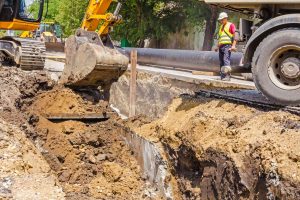Last year, the Occupational Safety and Health Administration (OSHA) passed the most recent rules for curbing the negative health effects of breathing in silica dust. Those who work in an environment with the regular cutting and grinding of concrete and stone are often victims of silica dust exposure. As a result of their silica dust exposure, employees could suffer from lung cancer, chronic obstructive pulmonary disease (COPD), kidney disease, and silicosis. The relatively new rules are expected to prevent over 900 yearly cases of silicosis and make employees much safer on the job. Here is what you need to know about the rules for silica dust exposure.
The Silica Dust Exposure Rules
The key takeaways from the OSHA silica dust exposure rules include:
- Silica dust exposure has to be limited to an amount that is less than 50 micrograms of respirable crystalline silica per cubic meter of available air, over the average of an 8-hour work shift. This averages periods of higher exposure (when actively cutting or grinding concrete) and periods of no exposure (performing other work at the job site).
- Employers have to reduce exposure and stay under the permissible exposure limit (PEL) for silica dust by:
- Using engineering controls, like additional ventilation or water, to stay under the PEL
- Offer respirators to employees when engineering controls will not provide the amount of exposure needed to stay under the PEL
- Limit construction worker access to high-exposure silica dust areas of the site
- Create a formal silica dust exposure plan and familiarize your employees with what it dictate
- For workers who come near the higher end of the PEL, offer medical exams to ensure their prolonged health
- Train all of your employees in ways to mitigate silica dust exposure risk and reduce the likelihood of problems
Construction Safety and GPR Scanning from Concrete Visions
Concrete Visions has over 12 years of experience and expertise in concrete scanning and we know how to detect any problems lurking beneath the surface. We use ground penetrating radar accurately and expertly and are familiar in many other methods that can be used when appropriate like concrete x-ray and electromagnetic conductivity. We are also very familiar with the latest construction safety techniques and train all of our workers to do their work quickly, accurately, and safely. If you would like to learn more about how we can help you, give is a call at (410) 766-2210 or visit us online. For more articles and tips, follow us on Facebook, Twitter, LinkedIn, and Google+.

